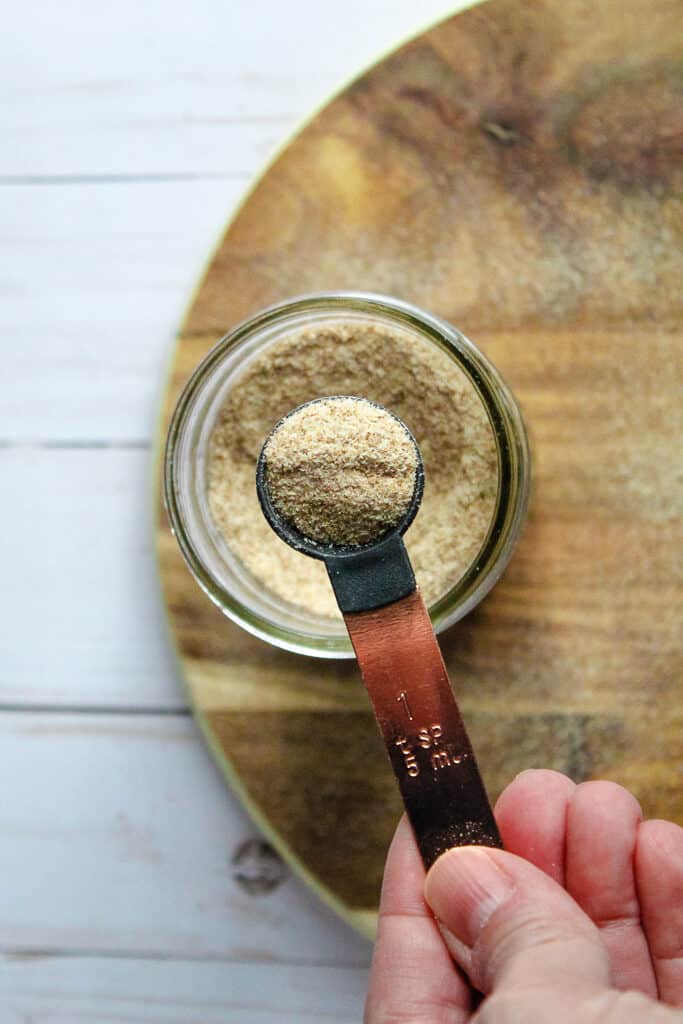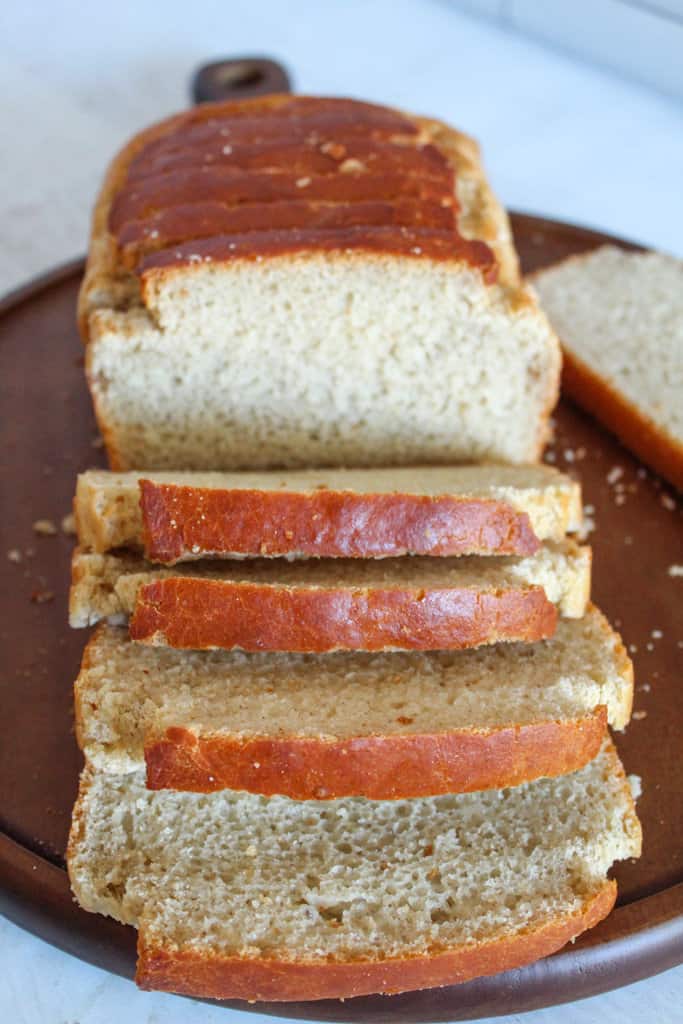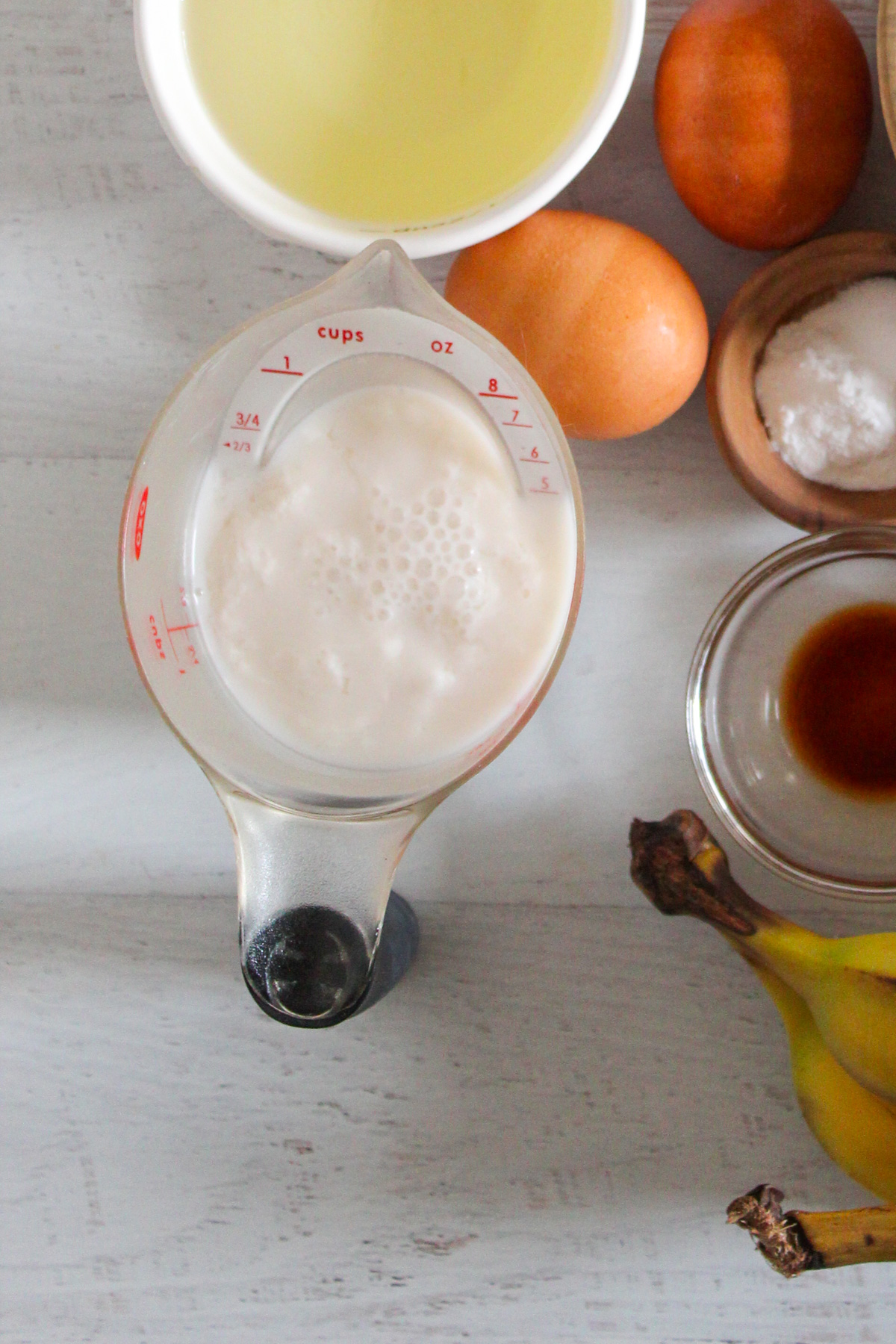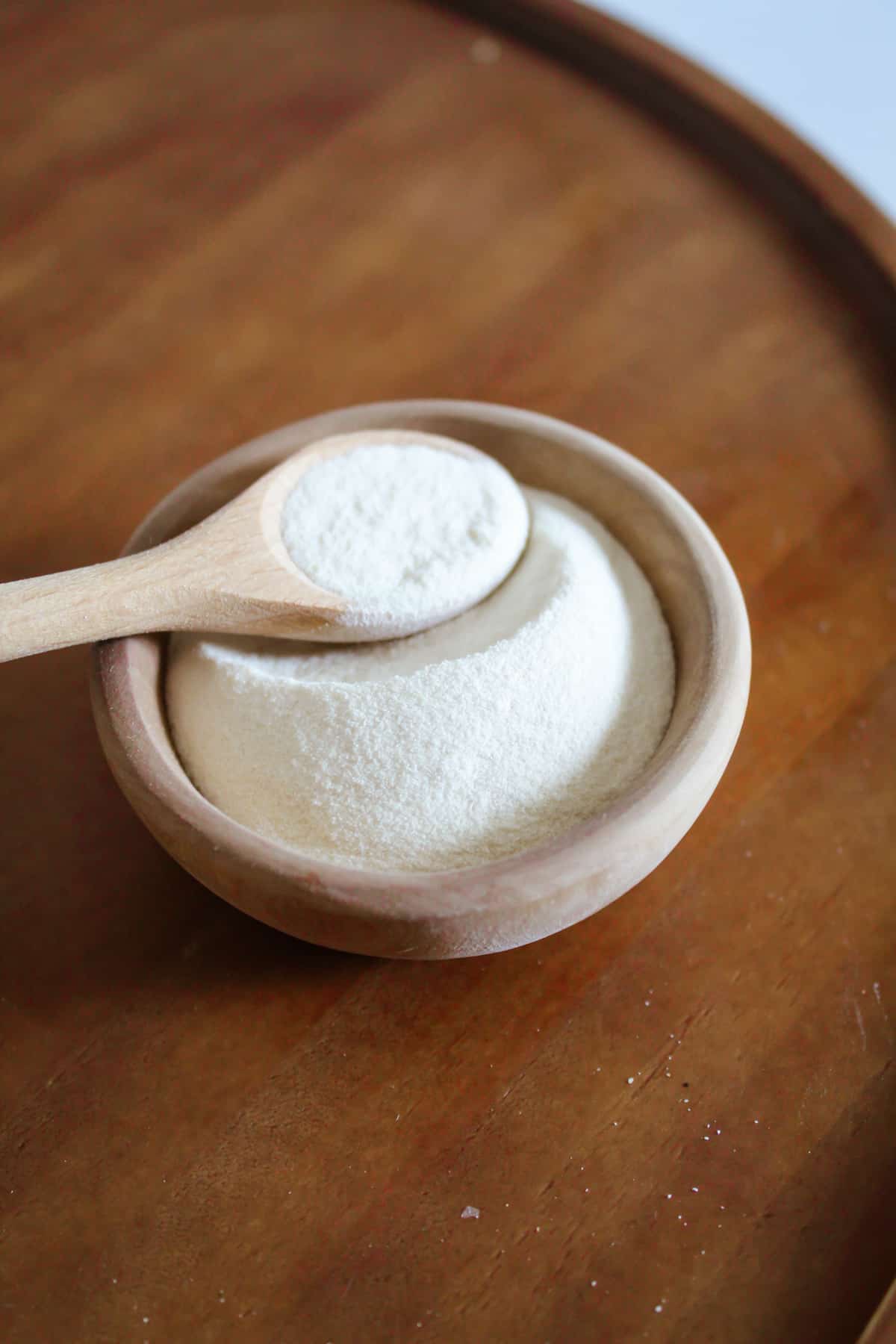Best Potato Starch Alternatives and How to Substitute
Potato starch and potato flour are not the same thing! Find out what to use as a potato starch alternative and how to substitute potato starch in your gluten-free baking and cooking.
This article was originally published 5/22/2019. It was revised with more details and pictures on 4/13/2021 and then again on 2/2025 with more information.
Table of Contents

I love using potato starch in my recipes and it’s a great ingredient to keep on hand for a gluten-free diet. Like other starches, it doesn’t have a lot of nutritional value, but it can absorb moisture and make your baked goods extra light and tender.
It’s especially great in this Gluten-Free Easter Bread and Gluten-Free Italian Bread, where it helps enhance the texture and hold the dough together.
However, it’s not a very common ingredient for home bakers, so it’s very likely that you don’t have any on hand. That’s not a problem!
You can easily substitute potato starch with any other type of starch as well as several other popular gluten-free ingredients. I’ll help you find just the right option for your next recipe to make sure it turns out great every time! (Reference this substitution guide for even more information on substitutes.)
Best Potato Starch Substitute: Key Takeaways
Potato starch is a fine, powdery starch derived from potatoes, which can be used to thicken a variety of sauces or gravies or enhance the texture of baked goods.
It can be replaced in a 1:1 ratio with other gluten-free starches, like arrowroot powder, cornstarch, or tapioca starch.
If those are not available, you can also substitute other gluten-free flours or binding agents, although those are more complex and require careful adaptation.
You’ll want to make sure to choose a suitable substitute that works for the particular recipe at hand and your nutritional needs.
What is Potato Starch?
Potato starch is made by removing the potato peel, then the potato is made into slurry, which is dehydrated to form the starch.
It is a very fine powder, much like cornstarch or arrowroot powder, with a rather bland flavor. It doesn’t taste overwhelmingly like potato, which makes it good for using in both sweet and savory dishes, even if you are cooking something sweet. We typically use it to make gravies and sauces, or to make baked goods light and fluffy.
Pro Tip: If you do use potato starch in a gravy or sauce, don’t let the liquid boil. The high heat will make it harder for the liquid to thicken.
It’s not the same as potato flour, which is made with the whole potato, including the skin. After the potatoes are dried, they are then ground into flour.
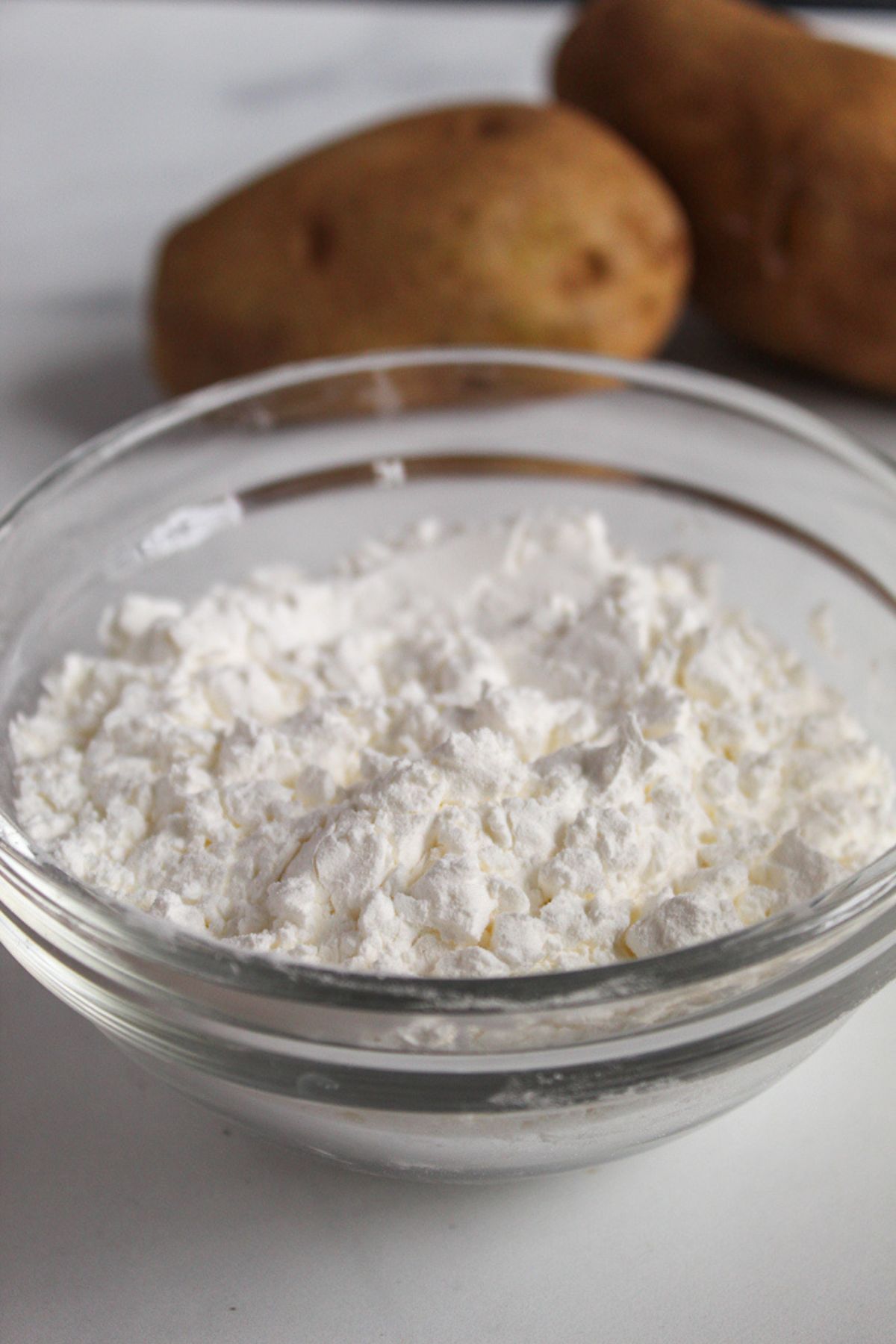
Top Potato Starch Substitutes
If you’re working on a recipe that calls for potato starch and you don’t have any, you’re in luck! Starches don’t cause as much trouble as flours do! You have a few starches to choose from besides potato, and they are pretty much interchangeable when you are baking with them.
Start with the starches and if you don’t have one of them available, then move onto flours and thickening agents.
1. Arrowroot Powder
Made from a starchy Indonesian root vegetable, arrowroot starch is perhaps the best substitute for potato flour. It’s produced in a similar way, extracting the starch from the pulverized root, and it has a mild flavor. It thickens well when heated, and adds a lightness to gluten-free recipes.
For the best results, use the same amount of arrowroot flour as potato starch.
2. Corn Starch
Corn starch is one of the most popular and abundant starches, available in every grocery store and in most home pantries. To produce cornstarch, the starches are extracted from the corn kernels, then dried and ground into a fine white powder.
Like potato starch, corn starch has a very mild, neutral taste and can be used to thicken sauces, gravies, pie fillings and more. It can easily be used in place of potato starch (or any other starch on this list) and is a great substitute.
Note: This is not to be mistaken with corn flour. Although they look similar, corn flour isn’t the same and is closer to cornmeal. It may work in a pinch, but will likely add a corn flavor and a slight grittiness to your recipes. Learn more about the best corn flour substitutes here.
3. Tapioca Starch
Also known as tapioca flour, tapioca starch is derived from the leftover pulp from processing the cassava root. It’s not quite the same as cassava flour, since the tapioca starch is really just the starch from the root.
It’s a popular gluten-free alternative for people with celiac disease or may be sensitive to corn. It’s especially effective at thickening dairy-based recipes, like puddings or creamy sauces.
Use equal portions of tapioca starch as potato starch.
4. Dried Potato Flakes
Sometimes even dried potato flakes can be a substitute for potato starch—yes, the kind in the box that you use when you want instant mashed potatoes. You usually need half as much.
If you are substituting 2 teaspoons of potato starch, you’ll need 1 teaspoon of potato flakes.
5. Potato Flour
It’s very important to note that potato starch and potato flour are not the same thing at all! You cannot replace them interchangeably, but you can use approximately half as much potato flour to potato starch.
6. Psyllium Husk
I often use psyllium husk to add flexibility and strength to gluten-free doughs, and almost always have it in my pantry. Although it is not a starch and doesn’t work like one, it is a great thickening agent. It’s best to only use it in small quantities though, since it serves a different purpose in the recipe and can affect the final texture.
Similar to substituting arrowroot powder, you can often replace 2 teaspoons of potato starch with 1 teaspoon of psyllium husk powder.
7. Sweet Rice Flour (Mochi Flour)
If you’ve ever had mochi, then you’d have experienced this special flour. Unlike regular brown or white rice flour, sweet rice flour (or glutinous rice flour) is made from a special type of short-grain white rice known for being very high in starches.
The rice kernels are ground down into a very fine powder known for its slightly sweet flavor and natural thickening properties.
Although it can be used as a potato starch substitute, it’s not an easy swap. You’ll need to reduce some of the other flour in your recipe.
One 1 cup of sweet rice flour is equivalent to ⅔ cup of potato starch and ⅓ cup of a different type of flour.
8. Coconut Flour
Coconut flour is not a starch but due to its ability to absorb liquids remarkably well, it can be used as a starch alternative in some recipes. You’ll generally want to use it in baking, not thickening, as it will likely not thicken your sauces or fillings in the same way.
Make sure to use the right amount, though. You only need a small amount of coconut flour (approximately half as much) to replace potato starch.
For every 2 teaspoons of potato starch, use 1 teaspoon of coconut flour.
9. Gluten-Free Flour
Most gluten-free flour blends are formulated to include just the right balance of starches, binding agents, and more. If you’re in a pinch, you can use your favorite flour blend instead of potato starch, but you will need to use half as much.
This isn’t a perfect swap, and usually works best in baked goods, not sauces or gravies.
And here are some tips for gluten free baking:
- Gluten Free Starches: Arrowroot, Tapioca, Potato and Cornstarch
- Alternatives for Xanthan Gum in Gluten Free Baking
- How to Substitute for Xanthan Gum and Guar Gum
- How to Make a Gluten Free Flour Mix
While you’re here, sign up below to get our weekly emails – there’s a new recipe in each one!
